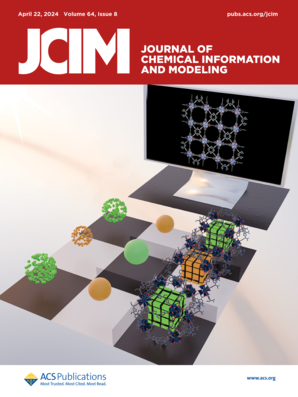预测抗体-药物偶联物(adc)合成中药物-抗体比率(DAR)的机器学习。
IF 5.6
2区 化学
Q1 CHEMISTRY, MEDICINAL
引用次数: 0
摘要
制药业在开发高效和具有成本效益的给药系统方面面临着挑战。在各种应用中,抗体-药物偶联物(adc)通过将细胞毒性或生物活性药物与单克隆抗体(mab)结合用于靶向治疗而脱颖而出。然而,生物偶联方法可以产生不同的结果,包括不进行生物偶联,这取决于所使用的单抗、氨基酸残基和连接物有效载荷(LP)系统。在这项工作中,我们开发了一种能够预测生物偶联结果的机器学习(ML)算法,允许设计最佳的单抗、LP系统,并为开发高效adc提供条件。特别是,我们利用XGBoost算法预测adc合成中药物抗体比(DAR)的潜力。我们的模型显示出很高的预测准确性,赖氨酸和半胱氨酸数据集的R2评分分别为0.85和0.95。将ML算法集成到ADC合成的生物偶联过程中,为简化ADC开发提供了一种有前途的方法。本文章由计算机程序翻译,如有差异,请以英文原文为准。
Machine Learning for Predicting the Drug-to-Antibody Ratio (DAR) in the Synthesis of Antibody-Drug Conjugates (ADCs).
The pharmaceutical industry faces challenges in developing efficient and cost-effective drug delivery systems. Among various applications, antibody-drug conjugates (ADCs) stand out by combining cytotoxic or bioactive agents with monoclonal antibodies (mAbs) for targeted therapies. However, bioconjugation methods can produce different outcomes, including no bioconjugation, depending on the mAb, the amino acid residues, and the linker-payload (LP) system used. In this work, we developed a machine learning (ML) algorithm capable of predicting bioconjugation outcomes, allowing the design of the best mAb, LP systems, and conditions for the development of efficient ADCs. In particular, we exploited the potential of the XGBoost algorithm in predicting the drug-to-antibody ratio (DAR) in the synthesis of ADCs. Our model demonstrated high predictive accuracy, with R2 scores of 0.85 and 0.95 for lysine and cysteine data sets, respectively. The integration of ML algorithms into bioconjugation processes for ADC synthesis offers a promising approach to streamlining ADC development.
求助全文
通过发布文献求助,成功后即可免费获取论文全文。
去求助
来源期刊
CiteScore
9.80
自引率
10.70%
发文量
529
审稿时长
1.4 months
期刊介绍:
The Journal of Chemical Information and Modeling publishes papers reporting new methodology and/or important applications in the fields of chemical informatics and molecular modeling. Specific topics include the representation and computer-based searching of chemical databases, molecular modeling, computer-aided molecular design of new materials, catalysts, or ligands, development of new computational methods or efficient algorithms for chemical software, and biopharmaceutical chemistry including analyses of biological activity and other issues related to drug discovery.
Astute chemists, computer scientists, and information specialists look to this monthly’s insightful research studies, programming innovations, and software reviews to keep current with advances in this integral, multidisciplinary field.
As a subscriber you’ll stay abreast of database search systems, use of graph theory in chemical problems, substructure search systems, pattern recognition and clustering, analysis of chemical and physical data, molecular modeling, graphics and natural language interfaces, bibliometric and citation analysis, and synthesis design and reactions databases.

 求助内容:
求助内容: 应助结果提醒方式:
应助结果提醒方式:


